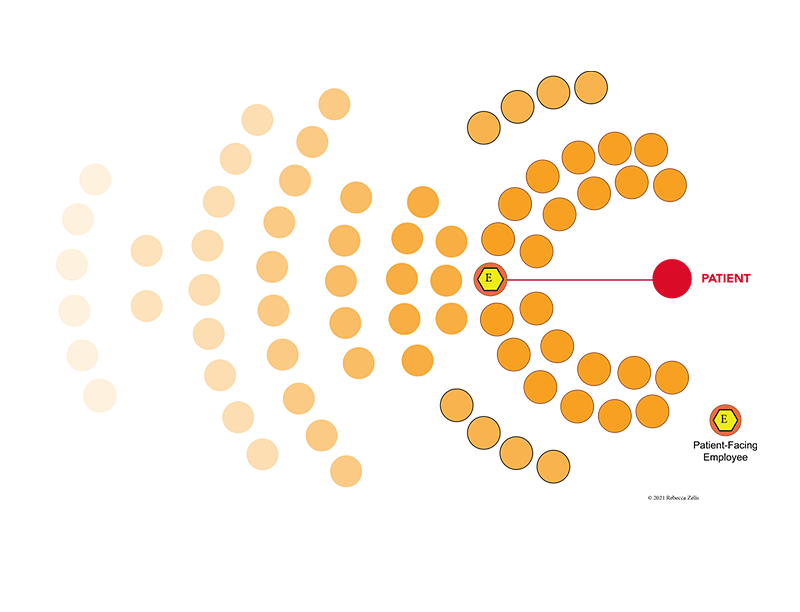Today’s health care workers are sorted into castes, fragmenting services and limiting providers’ ability to collaborate and provide patient-centered care.
These hierarchies:
- Make integrated care difficult
- Put an excessive burden on health care providers
- Silo workers based on specialty and status
- Disempower patients
- Increase medical errors and health care costs
- Cyclically reinforce problems in dominant education and organizational systems

Collective Medicine helps us understand the hierarchies that impede integrated care
A new visualization of the hospital's organizational structure serves to remove implicit assumptions in familiar hierarchical models that place certain employees at the “bottom” and others at the “top.” Reframing leadership as supportive and collaborative rather than directive helps employees recognize their interdependence, and promote a new framework for providing healthcare. Because patient safety and the relationship between an employee and patient are paramount, patient-facing employees and support staff should never be relegated to the “bottom” of a hierarchy!
These changes are a necessary response to the way our culture has changed. As people have access to unprecedented information and resources, individuals are more empowered and want to feel that their work is meaningful. An environment that promotes equity and collaboration shows how people at all levels of care and expertise can have a positive and valuable impact on others.
Collective Medicine Organization

